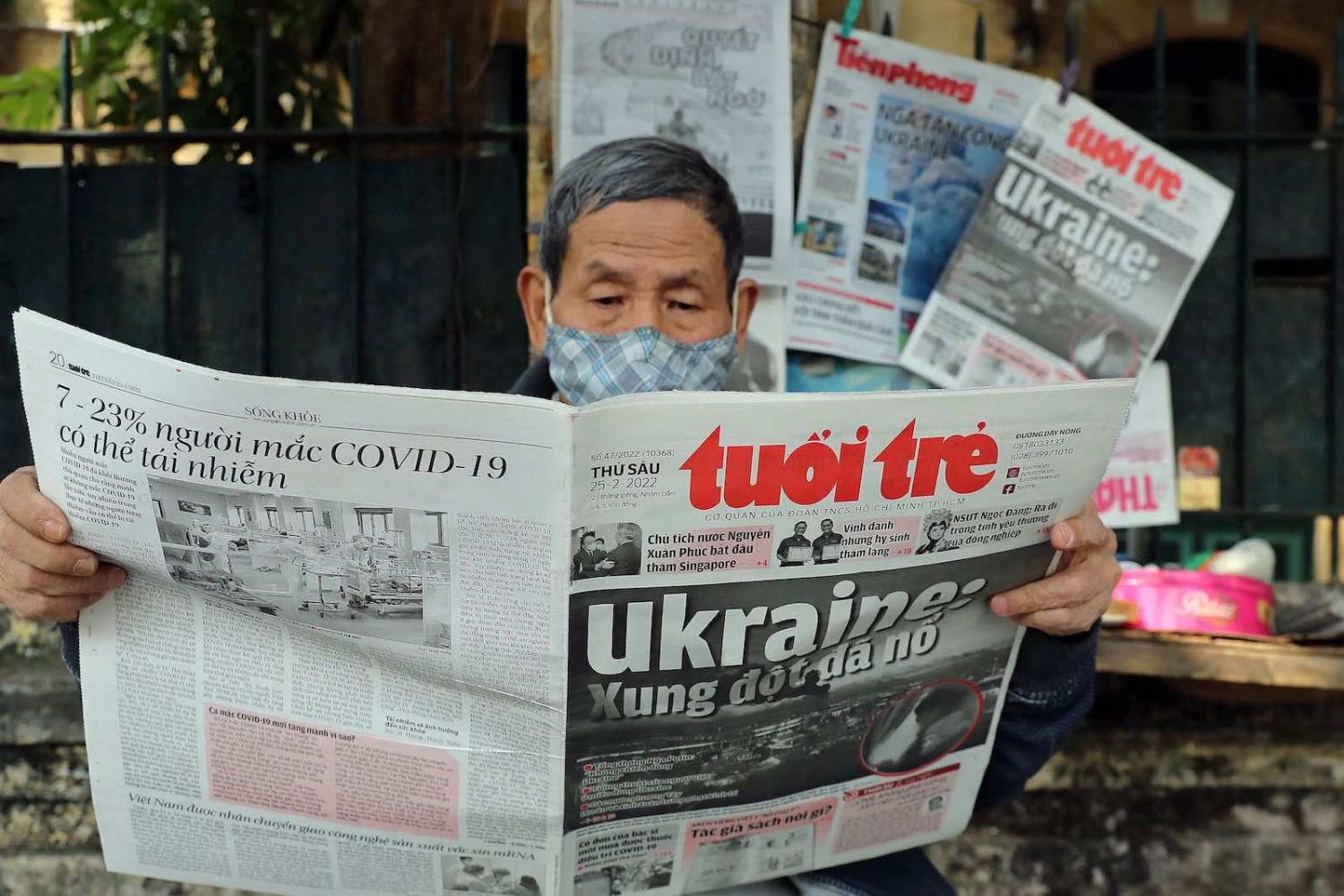Southeast Asia doesn’t much matter to the outcome of a war far away in Europe. Yet Southeast Asian countries responses to Russia’s invasion of Ukraine offer an insight into the region’s ability to navigate sharpening major power rivalries.
So how does the region’s response stack up so far?
Even by the group’s own standards, statements by the Association of Southeast Asian Nations on Russia’s invasion of Ukraine have been weak. So weak that neither the words “Russia”, nor “invasion” have appeared in the documents, which have called for peaceful dialogue and negotiation.
This is embarrassing for ASEAN as a group. Yet as a consensus document, to which Myanmar – having drawn closer to Russia in the wake of the February 2021 coup – needed to agree, clear condemnation of Moscow was never on the cards.
The initial instinct of almost every Southeast Asian country is to remain neutral on issues where major powers are divided.
The individual statements and positions of Southeast Asian countries matter more. In the 2 March vote in the UN General Assembly, all ASEAN members except Vietnam and Laos voted with the global majority to deplore Russia’s invasion of Ukraine (Myanmar’s vote was lodged by its Permanent Representative who does not represent the junta). Vietnam and Laos’ abstention can be put down to their deep historical ties with Russia, and dependencies on Moscow for military equipment. This is particularly important for Hanoi: an estimated 84 per cent of Vietnam’s military equipment comes from Russia (Laos, at 44 per cent is the next highest). This creates a dependency on Moscow for continued supply and maintenance of equipment – essential if Vietnam is to maintain a deterrent against Chinese aggression.
Yet rather than siding with their fellow mainland Southeast Asian countries – a now common pattern within ASEAN – Thailand and Cambodia voted in favour of the resolution. It is unlikely either country is strongly committed to the cause, given wishy-washy statements from both countries’ political leadership (Thai Foreign Minister Don said that condemning Russia would not help the situation, while Cambodian Prime Minister Hun Sen that only negotiations, not war, could resolve the dispute). Their choice to support the resolution probably results from a desire to go with the flow and avoid attracting opprobrium from any important partner. Cambodia’s vote suggests that China has not sought to rally diplomatic support for Russia in Southeast Asia, given Phnom Penh’s history of acting as a proxy for Beijing’s positions in multilateral forums.
Of the maritime Southeast Asian countries, Singapore’s response of sanctions and explicit condemnation of Russia’s actions by both ministers and officials has been the strongest, and appears to reflect genuine commitment to the principles underpinning the international order. As a small state with a track record of promoting global governance, its principled stance is rightly admired.
No clear political-level statement condemning Russia has come from any of the major maritime countries, although Indonesian President Widodo tweeted “stop war” and the Philippines representative to the United Nations gave a strong statement endorsing the resolution to condemn Russia’s invasion.
These varied responses lead to the following implications for future major power conflicts.
Singapore’s ambitious response shows ASEAN’s approach needn’t constrain the group’s more active members.
- The initial instinct of almost every Southeast Asian country is to remain neutral on issues where major powers are divided. This gives default advantage to any aggressor and puts the burden of persuasion on countries such as the United States who seek more principled Southeast Asian responses.
- Southeast Asian countries generally like to go with the flow of international opinion, where doing so is not too costly. Whichever country succeeds in shaping a favourable global narrative will have a corresponding advantage in Southeast Asia.
- ASEAN is not the main game. Views within the group diverge sharply, so the best-case scenario for any ASEAN statement will only ever be neutrality. And Singapore’s ambitious response shows ASEAN’s approach needn’t constrain the group’s more active members.
- Alignment dynamics and national interest are key. Vietnam, which generally likes to present itself as a paid-up supporter of the international rules-based order, simply cannot afford to risk Russian retaliation, given its dependence on Moscow. As with India, there is little the United States or others can do to alter these facts.
The reason such issues are important, of course, is the prospect of a Chinese invasion of Taiwan or other aggression against a neighbouring country. While the experience following Russia’s invasion of Ukraine suggest that responses may vary by country, and will depend on the circumstances, the United States would be unwise to count on anything better than Southeast Asian neutrality (what “neutrality” means in practice in a conflict much closer to home will be key).

